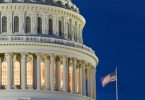Working From Home May Not Be Much Cheaper for Older Adults
Grocery and utility bills often increase, even as commuting and dry-cleaning expenses drop

GETTY IMAGES
En español | You’d think that working from home might enable workers to save a lot of money, because they don’t have to pay for parking or lunch at a restaurant or company cafeteria. But it turns out that may not be the case, according to a YouGov survey of 2,768 adults.
The survey found that boomers are the most frugal remote workers, spending about $24 less per month while they’re working at home — a startling contrast to millennials, who have been spending $208 more on average. Almost all — 86 percent — of boomer homeworkers say they spent less on gasoline and public transit; on average their spending on these items decreased $68.08.
In addition, boomers spent 54 percent less on clothes and dry-cleaning expenses, with an average drop of $40.37 on these items. Forty-nine percent spent less on restaurants and takeout food, saving an average of $30.01 here (though 25 percent of boomers spent more — and they spent big, splurging $152.89 a month).
Save 25% when you join AARP and enroll in Automatic Renewal for first year. Get instant access to discounts, programs, services, and the information you need to benefit every area of your life.
On the other hand, with remote workers eating at home, 47 percent of boomers spent more for groceries, on average $132.89 a month more. In addition, 27 percent spent more on utilities, increasing costs here by $49.51 on average.
Younger generations often spent more, though they saved money on childcare, an expense not as many boomers have.
“Boomers already seem to be doing a good job saving money while working from home,” CreditCards.com industry analyst Ted Rossman said via email. “I’d also stress that this survey focused on a fortunate population — those 30 percent of Americans who are able to work from home and continue to draw steady paychecks. So this group hasn’t been as affected by the recession as many others.”
More on Working From Home
- How older adults can find work-from-home jobs
- 8 part-time work-from-home jobs for retirees
- 5 steps to set boundaries while working from home
- 1 in 4 Workers at Higher Risk for Severe Case of COVID-19
10 million vulnerable Americans 65 and older are still working, study finds
by Andy Markowitz, AARP, June 23, 2020 | Comments: 0A woman gets her temperature checked while wearing a mask
GETTY IMAGESEn español | Nearly a quarter of adult U.S. workers are at higher risk for developing serious illness if they are infected with the coronavirus, due to their age or underlying health conditions, according to a new analysis of federal health data by the Kaiser Family Foundation (KFF —en inglés—).The researchers estimate that 37.7 million workers — about 24 percent of the adult labor force — are particularly vulnerable to serious complications from COVID-19, the illness caused by the novel coronavirus.That includes 10 million people ages 65 and over and 27.7 million younger adults with conditions identified by the U.S. Centers for Disease Control and Prevention (CDC) as risk factors for COVID-19, including diabetes, heart disease, moderate to severe asthma, chronic obstructive pulmonary disease (COPD), severe obesity, and compromised immune systems due to cancer treatment.
dynamic a logo mark for a a r p
Save 25% when you join AARP and enroll in Automatic Renewal for first year. Get instant access to discounts, programs, services, and the information you need to benefit every area of your life.Another 12 million at-risk adults who do not work, more than half of them 65-plus, are vulnerable to indirect exposure because they live with someone who works outside the home, the study found.
The research highlights challenges to workplace safety as states ease stay-at-home restrictions, more businesses move toward reopening and more workers return to job sites.
“As an employer, I know that employers are largely on their own to develop policies to reopen safely,” says Drew Altman, KFF’s president and CEO. “These data suggest employers should take into account the higher risk some workers will face, allowing them to work at home where possible, to be tested and to minimize their risks if they return to work.”
‘Creative approaches’ to work needed
The study utilizes 2018 data, the most recent available, from the CDC’s National Health Interview Survey to assess how many adult workers are at elevated risk for serious cases of COVID-19 if they contract the coronavirus.The survey collects income and household information as well as health data, which KFF says allowed researchers to analyze how workers’ economic circumstances might intersect with coronavirus concerns. For example:
Large majorities of both groups studied — 61 percent of those 65 and up and 86 percent of younger workers with underlying conditions — work full time.
The median annual income is $37,000 for the older workers and $40,000 for the younger cohort.
A quarter of the older group earns less than $17,300 a year, and a quarter of the under-65 group makes less than $21,100.
Chart with red bars showing the number of adults at risk of developing severe illness from covid nineteen
“They have substantial connection to work and may face economic difficulties remaining absent from their jobs even if safety is a question,” the report says. Given those pressures, employers and workers, and governments regulating restarted economic activity, “may need to consider flexible and creative approaches to balance safety and business needs.”Rachel Garfield, codirector of KFF’s Program on Medicaid and the Uninsured, and a coauthor of the report, says those approaches could include:
Providing workers with health screenings and personal protective equipment (PPE)
Adapting some jobs to accommodate telework
Changing how employees interact with customers and clients
Changing how they interact with each other (for example, by altering shifts or reducing access to shared spaces)
Providing transportation options for those who use public transit
“Obviously not all options are available to all businesses, and not all risk can be eliminated,” Garfield says, “which poses challenges to all workers and particularly those who face underlying health risks.”1 in 4 Workers at Higher Risk for Severe Case of COVID-19
10 million vulnerable Americans 65 and older are still working, study finds
by Andy Markowitz, AARP, June 23, 2020 | Comments: 0A woman gets her temperature checked while wearing a mask
GETTY IMAGESEn español | Nearly a quarter of adult U.S. workers are at higher risk for developing serious illness if they are infected with the coronavirus, due to their age or underlying health conditions, according to a new analysis of federal health data by the Kaiser Family Foundation (KFF —en inglés—).







